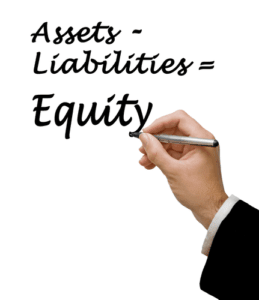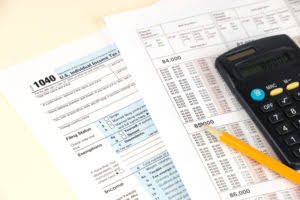
Free on Board is used in freight forwarding to define where the seller takes responsibility for goods, freight costs, and liability. For example, it’s commonly thought that FOB means all of the seller’s costs are covered by the buyer. Instead, FOB defines at which point responsibility for costs transfers between the seller and buyer. When goods are shipped FOB shipping point, the sale is considered done once the carrier picks up the items. This means the seller records the sale right away, while the buyer adds the goods to their inventory, even if they haven’t physically received them yet. CIF places the responsibility on the seller until the goods reach the buyer, making it potentially more expensive for the buyer as the seller chooses the forwarder.
FOB shipping point on buyer’s side
In FOB shipping point, the buyer takes over as soon as the goods leave the seller’s warehouse. In contrast, under FOB destination, the seller is responsible for the goods (including all shipping costs) until they arrive at the buyer’s specified location or another agreed-upon destination. The buyer (consignee) pays the costs of ocean freight, insurance, unloading, and transportation from the arrival port to the final destination. The seller passes the risk to the buyer when the goods are loaded at the originating port. From that point forward, the buyer is responsible for all costs, including shipping Mental Health Billing costs and freight insurance.

The Meaning of FOB Origin

FOB conditions may affect inventory, shipping, and insurance expenses, regardless of whether the transfer of products happens domestically or internationally. The buyer and seller’s bill of sale or other agreement determines ownership; FOB status only indicates which party is responsible for the cargo from beginning to end. If you’re in the shipping industry, you need to be familiar with the shipping term FOB destination and all it implies. You should be able to answer the question of what does FOB mean in shipping and convey the fob price meaning. FOB is an acronym that means “free on board,” so FOB destination means free on board destination.

Inventory and COGS
- Incoterms address aspects such as risk transfer, cost allocation, and customs clearance responsibilities, ensuring both parties have clear expectations.
- The seller will be responsible for the shipping costs, which will be an expense in January when the sale is reported.
- Starlight Trading Company can help you navigate the complexities of FOB terms and ensure your international trade transactions are seamless and successful.
- This freight term is usually stated on the invoice in order to determine who is responsible for the transportation of goods, the buyer or the seller.
- FOB Destination is a strategic shipping term that can offer substantial benefits for businesses engaged in international trade.
- FOB terms are vital because they clearly define who pays for shipping and insurance at each stage of the transport process.
It is crucial for buyers and sellers to understand the terms of their agreement and the implications of FOB Shipping Point versus FOB Destination. The buyer assumes all risks and benefits of ownership as of the moment the shipment arrives at the shipping dock. Also, under FOB destination conditions, the seller is liable for the merchandise’s transportation costs. When a product is sold “FOB shipping point,” or ‘fob origin,’ the buyer assumes responsibility for the goods as soon as they are loaded onto the carrier at the point of origin. The buyer pays the seller or supplier nothing more than the cost of transporting the product to the designated shipment point.

In international trade, FOB terms clearly define the point at which responsibility and risk transfer from the seller to the buyer. This is crucial because it affects insurance, payment terms, and delivery logistics. Unlike the FOB shipping point, the risk of loss or damage to the goods remains with the seller throughout the transport journey. This arrangement can be particularly advantageous if you want to ensure that goods arrive in perfect condition without handling transit risks. FOB Destination stands for Free Board Destination, which means that the seller retains ownership and responsibility for the goods until they are delivered to the buyer’s specified location.
FOB Delivered
If something goes wrong during transit, even though the responsibility isn’t yours, the buyer might not be thrilled, which could strain future business relationships. Plus, If the buyer faces issues with customs or transit, it might delay the final payment or cause complications, which, again, can impact the seller’s financial statement. In contrast, with FOB destination, the seller remains in charge until the goods reach the buyer’s doorstep. If the goods are damaged or lost before they arrive, it’s up to the seller to make it deal with this problem, whether that means replacing the items or offering a refund. FOB destination, is used to mean the seller of the goods pays all expenses in putting the goods ‘on board’ the transport, and delivering them to the buyers destination. Until the goods arrive at the destination they should be included in the inventory fob shipping point example of the seller as goods in transit.
Is Amazon FOB Shipping or Destination?
A court decision declared that the seller could reserve the transfer of the property of the load so that they could secure payment and not to prevent the transfer of possession.

Practical Examples of FOB Terms in Action
For businesses importing goods from overseas, FOB Destination may be a preferable option. This term allows the seller to handle the shipping costs and customs clearance, reducing the buyer’s logistical burden. On the other hand, for businesses exporting goods, FOB Shipping Point might be more advantageous. This term transfers the responsibility for shipping costs and customs clearance to the buyer, allowing the seller to record the sale as soon as the goods are loaded onto the shipping vessel. FOB delivery points are a fundamental aspect of international trade, providing a clear framework for the transfer of ownership and responsibility between sellers and buyers.
Then, the seller sends an invoice to the buyer for reimbursement when the items are delivered. Until the items have arrived https://mamibet4d.com/what-does-paying-a-retainer-fee-mean-2/ at the buyer’s location, the seller retains legal responsibility for them. Once the products have arrived at the buyer’s location, however, the buyer assumes full legal responsibility for them. These provisions outline the point when responsibility for risk of loss shifts to the buyer, who covers the freight charges, delivery location and time, and the payment terms for the shipments. Simply put, an incoterm is the standard contract used to define responsibility and liability for the shipment of goods. It plainly lays out how far along into the process the supplier will ensure that your goods are moved and at what point the buyer takes over the shipment process.
FOB vs. Other Shipping Terms
Under FOB shipping point, the moment the goods are loaded onto the ship, the risk transfers to the buyer. You’ve done your part—getting the furniture safely onto the ship—beyond this, it’s the buyer’s responsibility. This is also the moment that the supplier should record a sale since they’re taking ownership at the receiving dock. That allows the buyer to ensure they arrive in good condition and can be inspected upon receipt. The seller retains liability until the buyer accepts the goods, ownership, and liability at the receiving dock, office or agreed-upon place of transfer, after inspecting for damage. For example, the company ABC makes a credit purchase of $10,000 of inventory goods from its supplier “XYZ”.